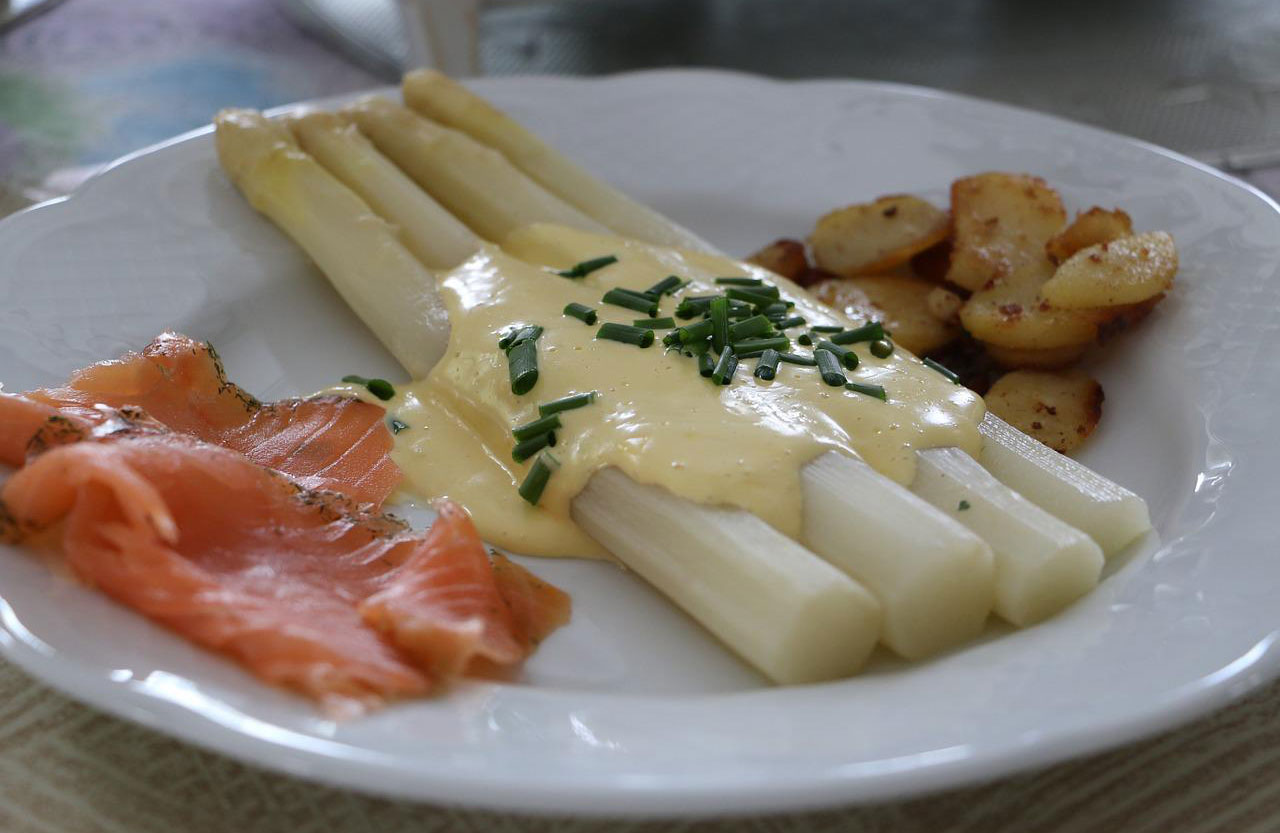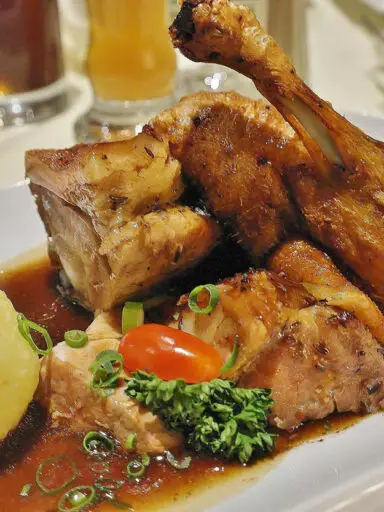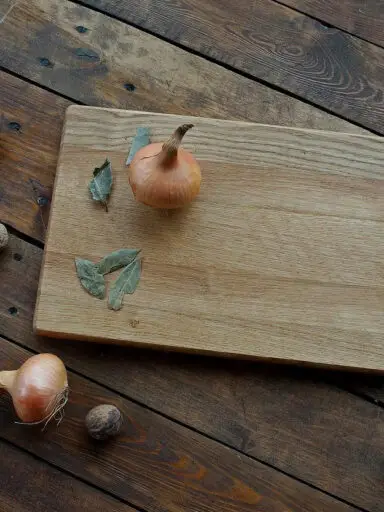Hollandaise sauce is one of the five French haute cuisine mother sauces. The others include Béchamel Sauce, Espagnole Sauce, Velouté Sauce, and Tomate Sauce. Hollandaise is considered a mayonnaise sauce as it is based on the emulsion of oil in egg yolk.
The sauce is loosely made from an emulsion of egg yolk, melted butter, water, and lemon. In other variations, one can substitute lemon for white wine or vinegar. It is also customary to season the sauce with salt, white pepper, and in some cases cayenne pepper.
Hollandaise is best known as the preferred topping on Eggs Benedict. It is also the sauce of choice for serving steamed asparagus.
History of Hollandaise Sauce
Hollandaise sauce is also known as a dutch sauce. Rightly so as it was developed by French Huguenots who were forced out of France in the late 17th century but returned from Holland with the recipe that they had developed there. The sauce was first documented in 1651 in the cookbook “Le Cuisinier François” by François Pierre de la Varenne.
The actual recipe was for asparagus with fragrant sauce, with the reference “make a sauce with some good fresh butter, a little vinegar, salt, and nutmeg, and an egg yolk to bind the sauce; take care that it doesn’t curdle“.
Preparation
Hollandaise sauce is an emulsion or a state in which two insoluble liquids are mixed together with droplets of one being suspended in the other. Emulsion solutions can be either stable or unstable. Hollandaise sauce is made stable by the egg yolk.
To prepare the sauce, all ingredients minus the butter are mixed in a double boiler and whisked over low heat. It is important not to overheat the sauce risking the cooking of the egg yolk. At this point, the mixture is removed from the heat, and the melted warm butter is added to the mixture a little by little.
The ingredients are generally whisked together until the mixture significantly increases in volume. The mixture should not cool as the butter will solidify. A few drops of hot water can prevent this from happening.
Food safety is an issue when dealing with this source as the egg can promote microbial growth in warm temperatures. The eggs can also be contaminated with Salmonella which can cause food poisoning.
Derivatives
Being a Mother Sauce, Hollandaise has a series of other derivatives sauces including:
-
Sauce Béarnaise: Uses a strained reduction of vinegar with additional ingredients including shallots, chervil, tarragon, and pepper. Béarnaise also has derivatives all of which are generally used on grilled meats and fish. Its derivatives include:
- Sauce Choron: added tomato purée
- Sauce Foyot (or Valois): added meat glaze
- Sauce Colbert: Like Sauce Foyot with added reduced white wine
- Sauce Paloise: has mint substituted for tarragon
- Sauce au Vin Blanc: Used for fish. It has a reduction of white wine and fish stock included
- Sauce Bavaroise: has added cream, horseradish, and thyme
- Sauce Crème Fleurette: has crème fraîche added
- Sauce Dijon (Sauce Girondine or Sauce Moutarde): contains Dijon mustard
- Sauce Maltaise: has orange zest and blood orange juice added
- Sauce Mousseline (Sauce Chantilly): folding whipped cream into the sauce. Sauce Divine has sherry in the mix
- Sauce Noisette: Uses browned butter or beurre noisette.




